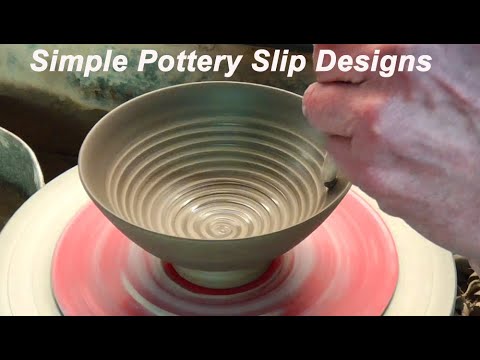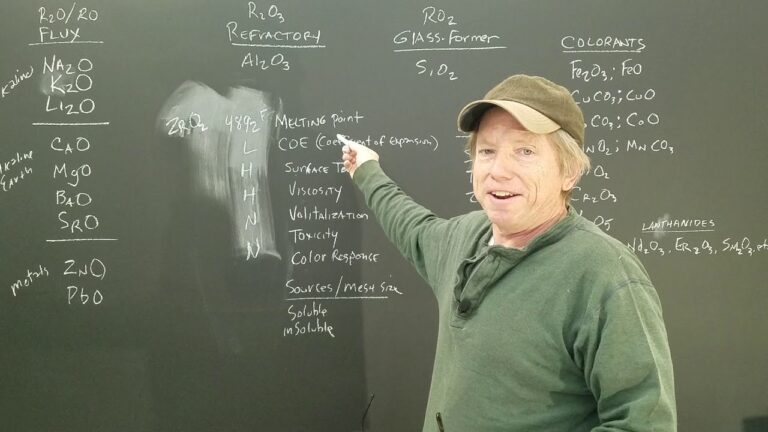How hard can it be? Surely white glazes must be the easiest of all to get right…
If you’re just after glaze recipes you can sign up to my mailing list via the link near the bottom of the page. Reading this article may help you develop your own though if you’d like to do that.
What makes a glaze white?
Most white glazes are simply a base glaze with some kind of opacifier added. The base recipe could vary a lot depending on your firing temperature and atmosphere of the kiln. There’s lots of info on the internet about base glaze recipes so I won’t cover them here.
Opacifiers make the glaze opaque. In smaller amounts the clay body beneath may still be seen, in larger amounts the glaze will be totally opaque with no visible clay. Imagine if you added double cream slowly into a glass of water. The opacity would go from clear to semi-transparent to totally white.
Most opacifiers are at maximum opacity at around 12% so there is never any need to add more than this. I’ve found that 7% to 10% is my preference for the opacifiers I’ve used.
Common Opacifiers
- Titanium Dioxide – Cheap, reliable with other colours, probably best choice for oxidation firings.
- Zirconium Silicate – Cheap , reliable even in reduction. Cutlery marks easily
- Tin – Expensive, beautiful whites but can be affected by atmosphere and other glazes in kiln.
Developing a rustic white glaze of my own
When working on a new glaze I start using software which is freely available from glazy.org and glazesimulator.com. I prefer Glazy but it doesn’t give any indication of melting cones of the glaze or its thermal expansion so I find Glaze Simulator useful for this. I try to get the glaze within the limit formulas, and then test it in very small amounts before proceeding to larger quantities.
For a long time I hadn’t really considered making a white glaze, colourful ones seemed a lot more interesting. At some point I really craved having a rustic white glaze though. One that showed some of the clay and had character. I didn’t want it to be plain white like a toilet bowl.
A few years later I’m still working on my recipe. The first version came about partly by accident – as is often the way in pottery. I was trying to formulate a mid temperature glaze without frit.
Frit is an excellent ingredient to help flux the glaze melt. I was having some problems with pinholing and wondered if eliminating the frit night help. I suspected the calcium borate frit I was using along with wollastonite which is also high in calcium might be a problem.
I decided to try a combination of other fluxes – bone ash, talc and wollastonite. I tried out the base recipe on some tests and also added varying amounts of titanium dioxide. The sample with 7% titanium produced the rustic white colour I had in my head.
I made up a few kilograms of this glaze to test further in my little gas kiln. All of the pictures here have been fired in a gas reduction kiln. I’m not sure what they would look like in an electric kiln.
The results I get with this glaze vary a huge amount depending on the firing. In these photos that same glaze, clay and kiln have been used. I’m fairly new to reduction firing but I’ll try to explain to the best of my ability why the results are so different.
In this first photo the glaze is quite a bright white, it has a slight brown ‘break’ over the sharper edges like the rims and heart decoration. This is most likely due to the relatively high melt fluidity of the glaze. This happens more where the pots get hotter.
There is no obvious speckle of the clay showing through. In this firing the kiln was taken to around cone 8, it has fairly heavy reduction around 900C for an hour and an oxidising atmosphere after that until the cones bent.
The next image shows the glaze when it gets really hot. These blue colours only come out on pots that are directly in the flame path. The firing schedule was similar to the other mug, this was just in the hottest part of the kiln. In my tiny kiln I’ve struggled to get consistent temperatures around the kiln. While this type of result looks nice, it’s very hard to reproduce consistently. Only a few pots from a kiln will get the blue colour. It also increases the likelihood of pinholing which can ruin an otherwise nice pot.

The oil bottle below is still the same glaze and clay. It has been fired in heavy reduction for an hour between 850C and 1000C, then lighter reduction until the cones drop. This firing schedule gives the most consistent results, most of the pots in a kiln turn out like this. The overall colour when fired like this goes a bit grey, and the speckles are sort of orange colour and look like they are melting into the glaze.

Further development of my rustic white glaze
I decided to change my glaze recipe, partly because I’m not happy with the grey white colour. I’d like to have a more brilliant white, but also see some speckle of the clay – not something I can achieve with the original recipe. The new version is called ‘Ice White’ in my glaze recipes PDF download – see bottom of page how to get the recipes.
Another problem with the rustic white recipe is the quite high thermal expansion. This has not been a problem when used on its own but I’ve tried to use it as a base for some other colours. Without the titanium dioxide and with some colour stains added I got crazing on my samples.
So for the new version I’ve used calcium borate frit instead of some of the fluxes. The bone ash has been removed completely and the talc and wollastonite reduced. Using the frit instead of other fluxes has lowered the thermal expansion, allowing the base to be used with stains without crazing. Keeping some talc as a flux means the amount of frit can be kept low. This allows calcium levels to be kept within the formula limits.
The cups below have 10% zirconium on the left, and 7% zirconium on the right. The left one shows how the speckles don’t appear to the right of the cup if reduction is not strong enough.
I’m still working on this recipe, it does cutlery mark a little bit. I hope to reduce that by lowering the amount of zirconium and probably increasing the gloss by reducing the clay to quartz ratio. I may also try and get the glaze to break more on the edges by increasing the melt fluidity a little. Overall I quite like the look – it has a nice defined speckle that I didn’t get when using titanium, and the colour is a nice bright white.
Below is a plate in the Ice white glaze. I’ve added the new recipe to the glaze PDF of my mailing list, so be sure to sign up below if you’d like to get the newest recipes.
Further work with white glazes
Once the desired white glaze has been achieved it can be used to create a variety pastel shades. My sky blue glaze is just my rustic white with a 0.2% cobalt oxide addition.
Colouring oxides such as copper, iron, rutile, chrome and many others can be used in small amounts to achieve a wide palette of pastels when added to a white glaze. I’d like to see any pots other people make with my recipes. Remember to test in small amounts though – these recipes may have very different results with other clays and kilns.








